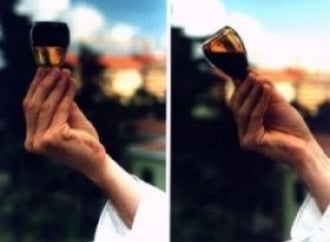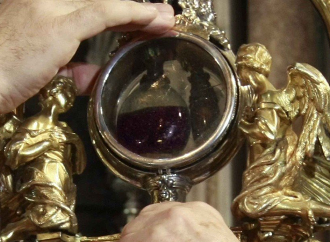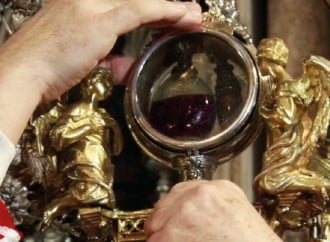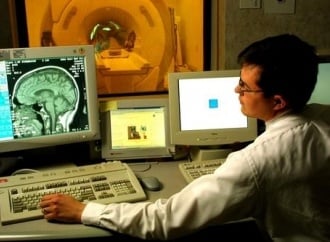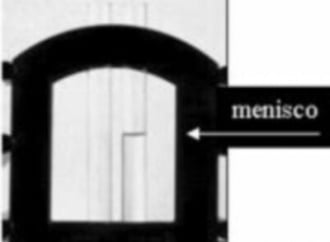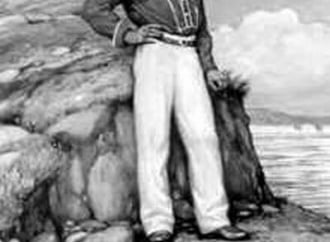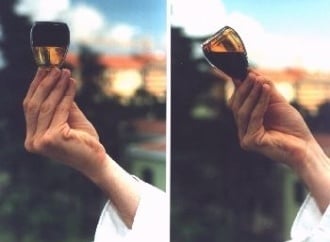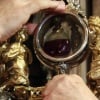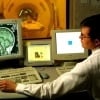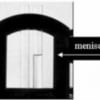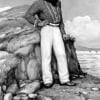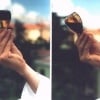WORKING BLOODY MIRACLES
SIRS - Among the religious relics from mediaeval times that are today venerated by the Roman Catholic Church are remains of the blood of early saints. Some of these relics become liquefied from their usual clotted state on specific occasions when their containers are handled by religious leaders. A vial of the blood of Saint Januarius (San Gennaro), for example, has been liquefied every few months since 1389 in Naples. The event draws crowds of thousands and a television and media audience of millions. The phenomenon seems genuine, is well documented and is still regarded as unexplained.[1]
We propose that thixotropy may furnish an explanation. Thixotropy denotes the property of certain gels to liquefy when stirred or vibrated , and to solidify again when left to stand. Shaking or often slight mechanical disturbances thus make a thixotropic substance more fluid, even to the extent of changing it from a solid to a liquid.[2]
In the typical blood-liquefaction ceremony, performed at different room temperatures, the act of checking whether liquefaction has occurred comprises repeatedly inverting the glass-walled portable relic case: a shear stress is thereby applied at this critical moment. Thus, a successful performance of the rite does not involve any conscious cheating. Indeed, inadvertent liquefaction events have been observed many times over the centuries during handling for repairs to the case that contains the sealed vial . [3]
In support of our hypothesis of thixotropy we have been able to reproduce liquefaction of samples resembling the blood relics that we have prepared using substances available in the fourteenth century.
To a solution of 25 g FeCl3.6H2O in 100 ml of water we slowly added 10 g CaCO3, and dialysed this solution for four days against distilled water from a Spectra/por tubing (parchment or animal gut works as well; a simple procedure[4] even allows us to avoid this dialysis step). The resulting solution was allowed to evaporate from a crystallization disk to a volume of 100 ml (containing about 7.5 % FeO(OH) ). Addition of 1.7 g NaCl yielded a dark brownish thixotropic sol which set in about 1 hour to a gel. The gel could be easily liquefied by gentle shaking and the liquefaction - solidification cycle was highly repeatable.[5]
The thixotropic property of this mixture was tested[6] in a CS-Bohlin rheometer (C14 coaxial cylinder system; stress sweep test, 1 Hz, 25 oC). After a 50-min setting time inside the sample cell, a shear stress (0.15-5 Pa) was applied; from the maximum in the G" (loss modulus) curve and the inflection point of the (lag phase) curve, we deduce a yield stress of about 4.5 Pa, corresponding to an elastic-viscous (gel-sol) transition. The same test, performed after a 50-min setting time, followed by a shear stress of 5 Pa for 30 sec, showed no evidence for a transition.
After making fine adjustments by adding water or NaCl, we obtained the best visual match to the contents of the Naples vial using 30 ml of this mixture in a 50-ml round and flattened bottle. We note that ferric chloride can be found in the form of the mineral molysite on active volcanoes such as Vesuvius.
Wee are attempting to prepare thixotropic mixtures from other substances. Among those that have met with some success are clays (56 g finely ground bentonite[7] stirred in 100 ml of water works well), beeswax in alcohol, and inorganic pigments in linseed or castor oil.
The chemical nature of the Naples relic can be established only by opening the vial, but a complete analysis is forbidden by the Catholic Church. Our replication of the phenomenon seems to render this sacrifice unnecessary.
Luigi Garlaschelli Dept. Organic Chemistry University of Pavia Via Taramelli 10 27100 Pavia Franco Ramaccini Viale Papiniano 44 20123 Milano Sergio Della Sala Dept of Neurology S.Paolo Hospital Via Di Rudini' 8 20142 Milano
Note
1) Encyclopaedia Britannica, 15th Edn. Vol 6, 495 (1985)
2) Mardles, E. W. J.- Nature, 159, 70-71 (1947)
3) Alfano G. B. & Amitrano A. - Il miracolo di San Gennaro - (Scarpati, Napoli, 1950)
4) Gutknecht, R. - Bull. Soc. Chim. Fr, 13,55-60 (1946).
5) Schalek, E. & Szegvary, A. - Kolloid-Zeitschr., 32, 318-19 (1923).
6) Eisenberg, A. et al. - A. Rev. Mater. Sci., 6, 335-59 (1976).
7) Reyes, E.- Thesis, Univ. Granada (1977).


